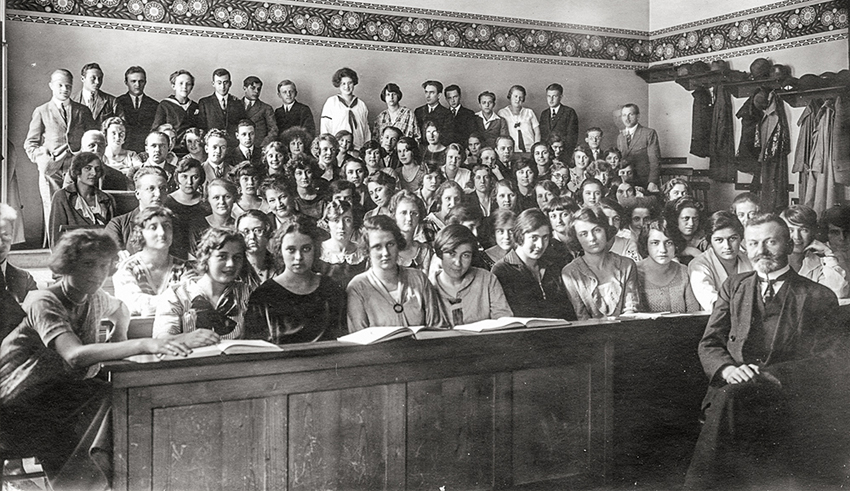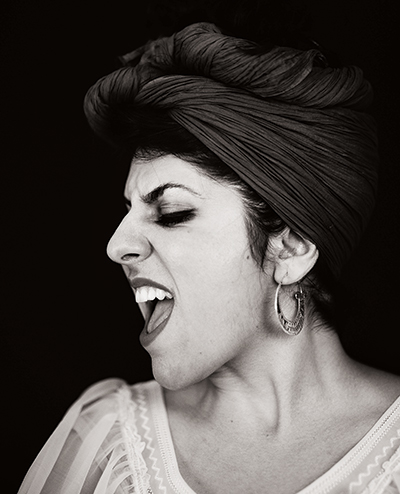A Scholarly Contribution to mdw 200

200 years of the mdw are doubtless an occasion on which we should approach our institution’s history with a critical gaze: history has been (and for the most part still is) told “from on high”, for which reason jubilees are taken as an opportunity to paint an institution’s achievements in a positive light. Such portrayals follow the pattern of a “heroic narrative” that tacitly conveys the standpoint of (mostly male) ruler-figures, leaders, and “masters”. But experts now consider such perspectives obsolete and inadequate due to their one-sidedness. In the case of the mdw’s splendid history, too, the fact is that it was and still is being written by numerous individuals—students, instructors, and administrators from a wide range of geographic and social origins as well as cultural backgrounds—whose inner states, impressions, and achievements would receive but little attention in a portrayal of history developed for purely representational purposes. What’s more, the mdw—all through its development to date—has always served as a symbol of cultural ideals and as a surface onto which diverse notions, desires, and yearnings have been projected.
In order to render our institution’s identity describable and also derive impulses from these reflections on a diverse tradition for a discussion of future strategies, these varied impressions and approaches are now being made visible in a one-year scholarly project supported by the mdw Rectorate. A presentation on 15 May will offer an overview of this project’s findings, which will thereafter be made accessible in the form of six “pop-up” displays at various locations around the mdw.
“Bi-Musicality” + “Worlds of Images” = “Changing mdw”
Research was conducted by team members from two different fields: from the vantage point of music ethnology, the emphasis was placed on the bi- and/or multi-musicality of students and graduates—in other words, their abilities to articulate themselves in multiple musical languages and styles. Interviews and recordings of music provided (anonymised) statements and musical content from which insights could be derived on the significance of this quality to a person’s studies and their career as well as to their self-understanding as a musician.

In a further step, the evaluation of the findings produced a presentation demonstrating the kind of musical diversity that could be lived and taught at the mdw in accordance with the highest standards of quality. By individually transcending boundaries and traversing the most varied realms of imagination, the various facets of the mdw’s transcultural nature become clear—showing this focus on bi- and multi-musicality to be a tool that can be used to render visible the potential of the musical diversity that exists at today’s mdw.
For the musicological part of this project (Worlds of Images), individuals who have been active in the past and the present, who have been engaged in constant interplay with the mdw and thus also involved in shaping our institution’s self-understanding, were consulted with as witnesses to the ideas and affectivities associated with the university. Their differing (musical) socialisations, personal perspectives, values, and ideals, as well as their experiences and interactions at and with the mdw, were documented via interviews. Evaluating these interviews affords insights pertaining to aspects of symbolic significance, identities, and both aesthetic and societal notions or images that are associated with the mdw as a place and simultaneously characterise the political and sociocultural situations in which they originated, all of which serves to place the institution within a historical context. And the archived interview recordings can be regarded as the basis for an audio-visual vault of mdw-related memories that, above and beyond the present project, can prove useful for diverse interdisciplinary and/or art-based forms of evaluation.
The topical proximity of these two projects makes possible the creation of “interventions” in the mdw’s public areas that involve both. Findings from the overall project will hence be presented as six thematically concentrated highlights, each of which will occupy different locations around the institution and make clear visually and audibly the broad range of ways in which this material can be evaluated:
1. “Good Music – True Art”
In the past and today, the mdw has been a place where aesthetic norms are enforced. The (largely nonreflective) privileging of the classical-romantic canon is just as questionable as is the orientation of the training offered (in terms of general dispositions, technical skills, taste, repertoire selection, stylistics) toward the standards associated therewith.
2. (Im-)Balances
In view of the present emphasis on diversity at the mdw, such diversity will be examined with reference to the traditionally operative hierarchical distinctions: (un)conscious attributions of value or lack thereof to social, gender-related, and ethical characteristics, as well as styles, instruments, etc.
3. Inclusions – Exclusions
The mdw developed out of a musical culture that, at its core, was exclusive and based on the exclusion of the many to the benefit of a small elite. Inclusion and exclusion based on unspoken notions of hierarchy still occur today in the form of various selection processes (as in admissions exams and other such hurdles) and also manifest themselves in the makeup of the university’s personnel.
4. Import – Export
In many contexts, the mdw has been viewed as a cultural centre of international appeal, and there have been repeated efforts to take the culture practiced here and carry it out into the world in a “missionary” fashion. The juxtaposition of old and new examples of this reveals continuities and changes in the university’s self-conception.
5. “Art” Music?
Ever since the mdw was founded, the contrast between erudition and entertainment has played a key role. While the associated value judgments used to be accepted unquestioningly, the growth in musical diversity poses questions as to supposed and actual changes.
6. Tradition – Innovation
To this day, the combination of the two buzzwords “innovation” and “tradition” is a central feature of the mdw’s mission statement. While efforts like the ones geared towards supporting transculturality take a decidedly contemporary approach, the tension between these two terms is indeed visible in diverse aspects of the mdw’s daily life (e.g. “early” and “contemporary” music, notions of historical progress that come to bear in the instruction of composers, etc.).
- Project heads: Ursula Hemetek and Cornelia Szabó-Knotik
- Team members: Thomas Asanger, Lena Dražić, Alexander Flor, Wei-Ya Lin, Severin Matiasovits, Hande Sağlam, Erwin Strouhal
- Collaborators: Julia Heimerdinger, Anita Mayer-Hirzberger

